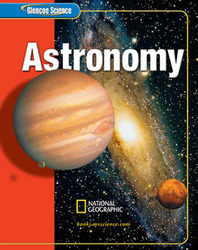1.
A) because they use radio waves, which pass freely through Earth's atmosphere in any weather condition B) because they use radio waves, which do not pass freely through Earth's atmosphere due to unpredictable weather C) because they use radios to help various telescope's computers communicate with each other D) because they never run out of energy 2.
A) 2005 B) 2020 C) 2000 D) It's operational now. 3.
A) go into orbit B) travel out of the solar system C) gather data D) be retrieved 4.
A) Can we harvest soil from the Moon? B) Is the Moon habitable? C) Does water exist in the craters of the Moon's poles? D) Does the Moon have an atmosphere? 5.
A) falling B) in orbit C) lost D) circling 6.
A) Uranus B) Saturn C) Jupiter D) Pluto 7.
A) the number of times a wave moves per unit of sound B) the distance waves travel in a certain amount of time C) the number of times a wave vibrates per unit of time D) the distance a line travels in a certain amount of time 8.
A) They don't need air. B) They are inexpensive. C) They can gather lots data. D) They are retrievable. 9.
A) A refracting telescope uses a mirror, and a reflecting telescope uses a concave lens to magnify an image. B) A refracting telescope uses a convex lens to magnify an image, and a reflecting telescope uses a mirror. C) There is no difference. D) A reflecting telescope uses a convex lens to magnify an image, and a refracting telescope uses a mirror. 10.
A) Mars Climate Orbiter and Polar Lander B) Mars Global Surveyor and Polar Lander C) Mars Climate Orbiter and Pathfinder D) Sojourner and Pathfinder 11.
A) transmitting radio and television signals B) gathering scientific data C) all answers are correct D) gathering pictures of Earth's surface 12.
A) the type of fuel they use B) their uses C) the way they are designed D) the parts of space they explore 13.
A) It would be reusable, so it would cost less. B) It would be more accurate, bring back more data, and it would be more cost effective. C) Many countries would chip in, so it would cost less. D) It would be cheaper to make, so it would cost less. 14.
A) because there's no such thing as sound in space B) because outer space alters the astronaut's hearing C) because sound waves can't travel through empty space D) because sound waves can't travel in space, far from Earth 15.
A) mirrors B) lasers C) computers D) lenses 16.
A) It is a refracting telescope, and there was a problem with the mirror. B) It is a reflecting telescope, and there was a problem with the lens. C) It is a reflecting telescope, and there was a problem with the mirror. D) It is a refracting telescope, and there was problem with the lens. 17.
A) Soyuz B) Skylab C) Mir D) International Space Station 18.
A) Project Gemini B) Project Apollo C) Project Mercury D) Project Surveyor 19.
A) convection B) radiation C) thermal D) conduction 20.
A) Jupiter B) Saturn C) Mars D) Uranus





